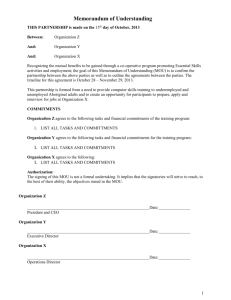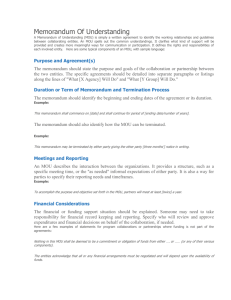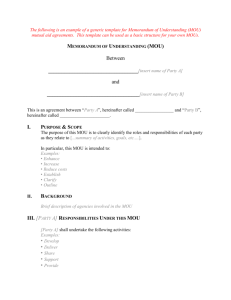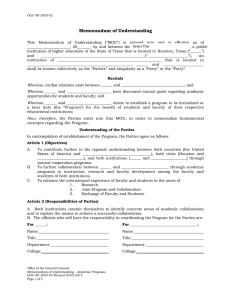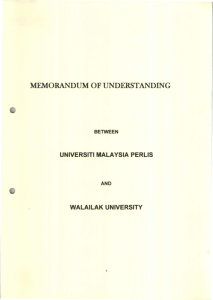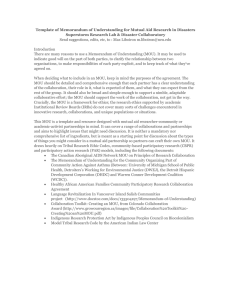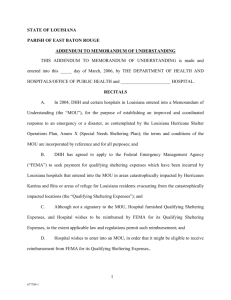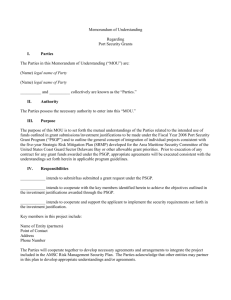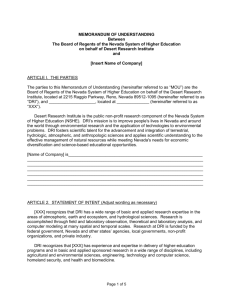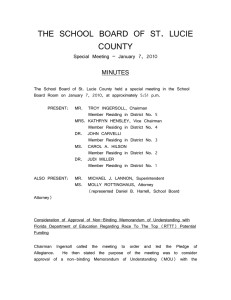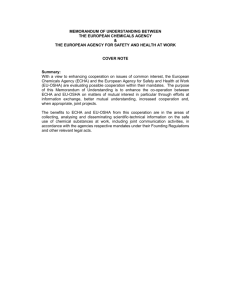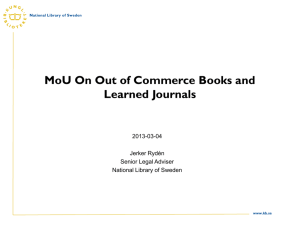III
advertisement
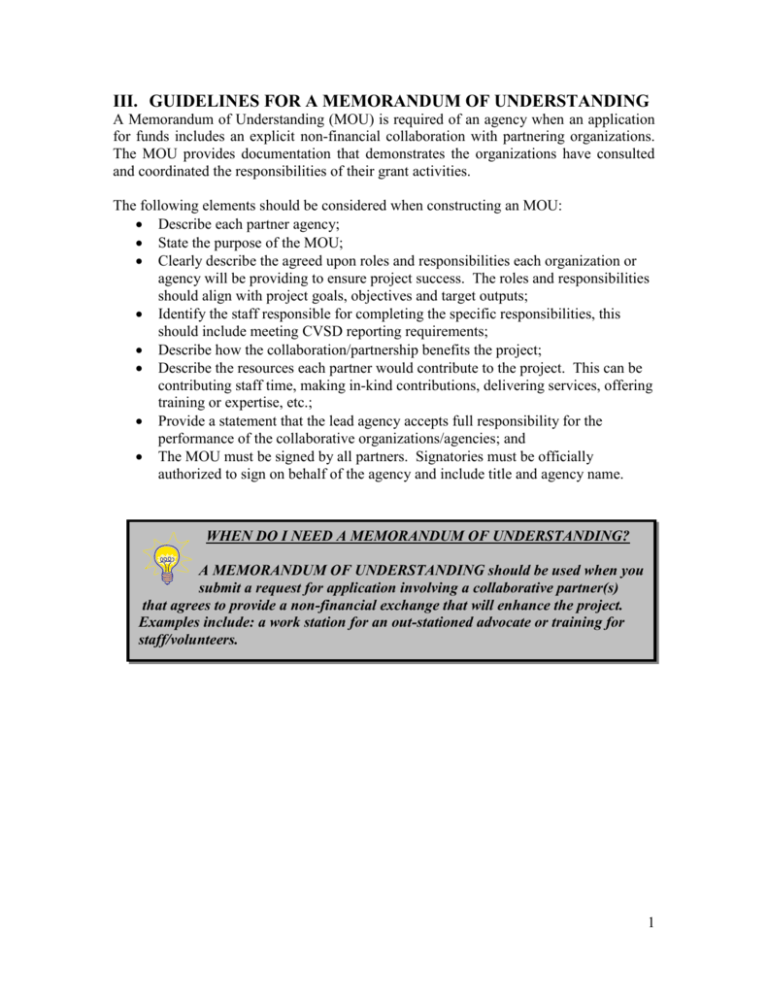
III. GUIDELINES FOR A MEMORANDUM OF UNDERSTANDING A Memorandum of Understanding (MOU) is required of an agency when an application for funds includes an explicit non-financial collaboration with partnering organizations. The MOU provides documentation that demonstrates the organizations have consulted and coordinated the responsibilities of their grant activities. The following elements should be considered when constructing an MOU: Describe each partner agency; State the purpose of the MOU; Clearly describe the agreed upon roles and responsibilities each organization or agency will be providing to ensure project success. The roles and responsibilities should align with project goals, objectives and target outputs; Identify the staff responsible for completing the specific responsibilities, this should include meeting CVSD reporting requirements; Describe how the collaboration/partnership benefits the project; Describe the resources each partner would contribute to the project. This can be contributing staff time, making in-kind contributions, delivering services, offering training or expertise, etc.; Provide a statement that the lead agency accepts full responsibility for the performance of the collaborative organizations/agencies; and The MOU must be signed by all partners. Signatories must be officially authorized to sign on behalf of the agency and include title and agency name. WHEN DO I NEED A MEMORANDUM OF UNDERSTANDING? A MEMORANDUM OF UNDERSTANDING should be used when you submit a request for application involving a collaborative partner(s) that agrees to provide a non-financial exchange that will enhance the project. Examples include: a work station for an out-stationed advocate or training for staff/volunteers. 1 SAMPLE FORMAT AND CONTENT MEMORANDUM OF UNDERSTANDING All italicized sentences are considered instructions and should be deleted prior to the submission of the final MOU. This Memorandum of Understanding (MOU) is entered into by and between: Provide the agency name and a brief description of each agency. A. Purpose. State the purpose of the MOU. Include statements that explain how the collaborative relationship enhances or benefits the Applicant’s program; B. Roles and Responsibilities. Clearly describe and delineate the agreed upon roles and responsibilities each organization or agency will be providing to ensure project success. The roles and responsibilities should align with project goals, objectives and target outputs. This may be contribution of staff time, in-kind contributions of space or materials, delivery of program services, provision of training or staff expertise, etc. Agency A agrees to: Responsibility/Activity Responsibility/Activity Agency B agrees to: Responsibility/Activity Responsibility/Activity 2 C. Reporting Requirements. Describe who will be responsible for collecting, collating and submitting data as per the project target outputs and outcomes. D. Timeframe. Clearly state the time period that this MOU will be in effect. This MOU will commence on and will dissolve at the end of the grant funding period on . F. Confidentiality. In order to ensure the safety of clients, all parties to the Memorandum of Understanding agree to adhere to the confidentiality expectations as outlined in the Grant Agreement. The designated lead agency accepts full responsibility for the performance of the collaborative organizations/agencies. This Memorandum of Understanding is the complete agreement between and and may be amended only by written agreement signed by each of the parties involved. The MOU must be signed by all partners. Signatories must be officially authorized to sign on behalf of the agency and include title and agency name. AGENCY A Authorized Official: Signature Printed Name and Title Address: Telephone(s): E-Mail Address: AGENCY B Authorized Official: Signature Printed Name and Title Address: Telephone(s): E-Mail Address: 3
